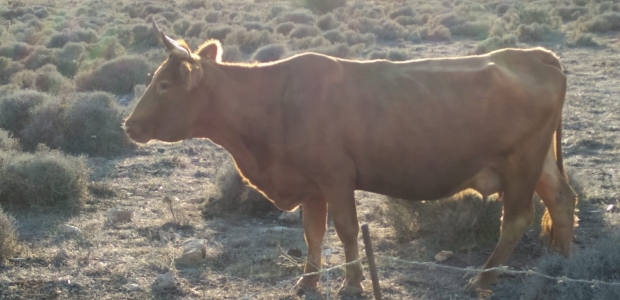Languages
Favignana cows
Where cows are not blue
You say milk, cheese, cows. And you think about the Po Valley and Parmigiano-Reggiano. It is an obvious, logical thought. Almost trivial. But if you think of cows that are free in the middle of the fields and sometimes you see them passing and crossing the streets, naturally and without worrying too much about cars, bicycles and people, then you must come to Favignana. The last place where you would think of seeing cows, as if they were on the pasture, in a land that in summer is dry, almost burnt, and that the red-hot air makes it even more improbable to think of it in other seasons green and rich in grass. Yet it is here in Favignana that you see cows outdoors and in freedom: beautiful, large, of different breeds and colors.
Singular really. Also because more than their presence, in large spaces delimited by traditional dry stone walls, the dryness of their freedom had always struck me. The fact that they grazed, precisely, on barren land, with sparse vegetation, almost non-existent in the summer months. In short: strange, but nothing exceptional. Until, however, I have not seen and heard any children shouting at their parents. "Look there are cows ... they are real ... they are big and they are not blue like those of advertising!" (ed. Milka chocolate). At that moment I realized that where there are, in Northern Italy and in particular in the Po Valley, cows are hundreds of thousands, but they are all in the stables. You don't see one around and in the fields. They stay inside the milk factories day and night. They are animal-machines, of which children have vague, comic-like ideas. Advertising. About the cows they only know that they make the milk they drink. And the cheese they eat.
Now it is known that life is strange and discoveries happen in the most unexpected ways and places. However, Favignana cows add to the surprise the enchantment of visions that should be called rural and instead are desert. Fantastic when you think about it and see it well. Mirages. Because being in front of cows lining up on the road followed by a guardian, Gandolfo's son, who follows them on a motorbike does not often happen. Indeed: almost never. And this exceptionality can be grasped in all its enveloping flavor, by tasting the cheese from those cows. Which I think is the last thing that would come to mind to eat in a seaside place. But which I strongly advise you to do. Maybe sitting down in the evening, looking at the sea, with a glass of good fresh Sicilian wine. It is the sun that sets in that little corner of paradise (even dairy) that will leave you with a blissful and unforgettable sensorial state.























